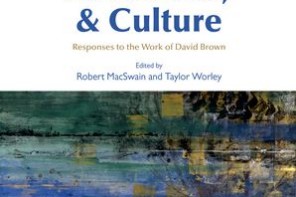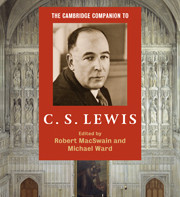
Review of Roger Scruton, Beauty: A Very Short Introduction (Oxford: Oxford University Press, 2011), 186 pages.
Beauty is a significant philosophical category for the study of art and theology. While significant, it can also be challenging to understand due to the often lofty and complicated writing about the subject. Despite the challenge, beauty, for some, is fundamental to the nature of God and to our understanding of art. As an aid in our collective understanding, Oxford University Press has recently released Beauty: A Very Short Introduction by Roger Scruton.
Roger Scruton is an English philosopher who has written widely on aesthetics, including participating in a BBC Documentary on the topic. Scruton also has links to the University of St Andrews where he is a quarter-time Professorial Fellow in Moral Philosophy. In this introduction to the topic, Scruton provides a comprehensive account of beauty that provides many jumping off points for further exploration. In this review, I will provide a short summary of Scruton’s approach to beauty in this book and suggest two areas of critique that are most relevant to those interested in art and theology.
Scruton’s book is roughly divided into two parts. The first half distinguishes beauty as four categories – human, natural, everyday and artistic. The second half provides something akin to an apologetic for the pursuit of beauty. The assumption that underlies both parts is that aesthetic judgements can and should be made. (5) While Scruton devotes a chapter to each category of beauty, this review will focus on his chapter on artistic beauty as it has most bearing for readers of this blog.
It is in the chapter on artistic beauty that Scruton’s own bias is most evident. Scruton suggests here and in a later chapter that from Duchamp’s urinal onwards, there has been a ‘flight from beauty’ in the art world. For Scruton, ‘[w]orks of art…have a dominant function. They are objects of aesthetic interest.’ (83) As a result, a judgement can be made about the art – either it uplifts or it demeans – and with that assertion, Scruton brings in the importance of taste and morality. To understand this dynamic, Scruton uses jokes and humour as comparison. We would say that it is poor ‘taste’ to laugh at someone else’s misfortune or a joke that is offensive. It is demeaning. For Scruton, ‘it really matters which kind of art you adhere to, which you include in your treasury of symbols and allusions, which you carry around in your heart…When it comes to art, aesthetic judgement concerns what you ought and ought not to like, and (I shall argue) the ‘ought’ here, even if it is not exactly a moral imperative, has a moral weight.’ (84)
The final three chapters further Scruton’s argument for the moral weight of aesthetic judgement. He begins with the importance of taste by suggesting that one’s taste reflects one’s character (123), and then he deals with two areas where a lack of beauty has desecrated that which is sacred. The first is pornography, suggesting that it reduces the human to an object – a body – and thus loses the embodiment that makes humans beautiful. The second is kitsch in relation to religious images. Scruton notes that ‘[i]mages are of enormous importance in religion, helping us to understand the Creator through idealized visions of his world: concrete images of transcendental truths.’ (159) In contrast, kitsch is ‘when people prefer the sensuous trappings of belief to the thing truly believed in.’ (158-9)
I would like to suggest two areas of critique in relation to this book. The first is an oversight of the argument. Throughout the work, Scruton display a bias towards ‘high’ art, evidenced by a majority of his examples as well as his dismissal of much modern art. However, in his chapter on everyday beauty, there is much space for Scruton to challenge his own categories and extend his discussion to include examples from popular culture, such as in music, graphic design, and film. Omitting ‘low art’ in the discussion of beauty could lead one to conclude that beauty is not there.
The second critique suggests how Scruton’s argument could be extended for theological discussion. Whether intentional or not, Scruton makes several statements that have deep theological import. For example, at the end of the book, Scruton suggests that our need for beauty makes us human. He writes: ‘‘It is a need arising from our metaphysical condition…it tell us that we are at home in the world, that the world is already ordered in our perceptions as a place fit for the lives of beings like us…beings like us become at home in the world only by acknowledging our ‘fallen’ condition…hence the experience of beauty also points us beyond this world, to a ‘kingdom of ends’ in which our immortal longings and our desire for perfection are finally answered.’ (145) A careful reader could use this and other statements as starting points for deeper theological reflection on the nature of beauty as Scruton presents it.
In conclusion, Beauty: A Very Short Introduction lives up to its name. In a lucid and clear way, Scruton introduces the reader to key aesthetic works while making a compelling argument for why beauty matters. Scruton’s own personal position provides a starting point for further discussion on an important topic for theology and the arts.






“Throughout the work, Scruton display a bias towards ‘high’ art, evidenced by a majority of his examples as well as his dismissal of much modern art.”
That’s being gracious. He seems to have a vendetta against the Turner prize in particular, which is a regular target for him. He has stated that modern art is out to “destroy beauty”, as if beauty could be destroyed. And I would say his bias isn’t just toward high art, it is entirely Eurocentric, bordering on colonialism.
Philosophically, I feel he has worked backwards. He has decided what he thinks is beautiful and built a philosophical framework that results in his particular taste as the only logical conclusion.
I agree, beauty matters. I think most of what he considers beautiful I find beautiful as well. Where I disagree is the tightly wound borders he feels are necessary to “protect” beauty that pushes much of what I find beautiful outside his constructed worldview.
Joe
Well, much of modern art deserves dismissal including all of Damien Herst. The horse head with the maggots. The virgin Mary made out of horse dung and pornographic images. The disturbed artist who had his friend shoot him in the arm, nearly drowned himself, and slept in the art studio for 22 days. Seriously. While it may be art it’s really bad art. The Turner prize incentivises novelty at the expense of beauty. We need more Scrutons in the university and less Turner aspirees.
Paul
We need neither more Scrutons NOR Turner prize aspireees.
We have enough people in the art world who exist to exert authority (like the gallery system Herst and Burden seek to subvert). We have more than enough people in the arts who believe “It isn’t art until I say it is art.”
We need more artists to create honestly. We need more artists who create because they can’t do anything else, not because they are trying to be justified or affirmed by either a Scruton or a Turner award. We need more people to spur on the artists to even greater creativity, not foist some human fabrication about what is beauty.
Bad art exists regardless of genre. Modern art has no monopoly on that. The European art history Scruton relies on for his taste and philosophy had its issues with each movement:
“Even the word ‘Gothic’ came out of a jibe. Renaissance writer Giorgio Vasari, looking down on artists living across the Alps from him for their highly ornamental stonework, referred to them as ‘these Goths, these barbarians untutored in the true classics.\'”
Or from an early impressionist review:
“When the human figure is involved, it is another matter entirely: the aim is not to render its form, its relief, its expression – it is enough to give an impression with no definite line, no colour, light or shadow; in the implementation of so extravagant a theory, artists fall into hopeless, grotesque confusion, happily without precedent in art, for it is quite simply the negation of the most elementary rules of drawing and painting. The scribblings of a child have a naivety, a sincerity which make one smile, but the excesses of this school sicken or disgust.”
I don’t care about bad art. Bad art is self-defeating and self-correcting. It won’t last because it can’t. And Beauty matters so much that, unlike Scruton fears, it can’t be destroyed and needs no defending.
Joe
Bad art will last so long as the federal government subsidizes it and organizations like Turner hold them up as something to aspire to. Which btw, JMW Turner would be rolling in his grave if he knew his name was associated with the Turner prize. If there were a Scruton award, I’d probably have already purchased a print of it.
The difference is, no one has to buy Scruton’s books, but our tax dollars go towards funding the ridiculous pieces by the NEA4 and the usual suspects.
My personal rule of thumb – if I wouldn’t hang it in my bedroom, it’s not beautiful. If someone wants to put the horse head in enclosed glass in their home, all the more power to em. If I had to choose between a painting of Helen of Troy or the virgin Mary dung, I’d choose Helen, and I think the majority of reasonable peeps out there would choose the Helen piece as well.
Scruton makes great points in his longer work titled “Beauty” (I have yet to read this short introduction) and I suggest you follow up with CS Lewis’ “An Experiment in Criticism” which he writes about literature but the same can be applied to what’s known as the fine arts.
What does creating “honestly” look like practically?
As someone who has worked for arts organizations who have received NEA funding, both directly and indirectly, your intent on generalizing those artists and their work as ridiculous is in itself ridiculous. Now, if you want to say that the systems developed to support art have taken on more importance than the art they were created to support, I’m with you 100%.
It doesn’t matter who is funding “bad art”, if it is only has life as art as long as it is funded, then once the funding is gone, it won’t last. Self-corrected.
Creating honestly looks like an artist creating what is in them to create, not creating to achieve an award or thinking they should be evangelistic with their work when they have no gift of evangelism. If an artist is creating what someone else believes they should be creating (except in the process of studying their craft), including to win a prize, chances are they are not creating honestly.
How far do you want to take the populist notion of art and beauty? If more people prefer to hang, say, a Kinkade on their wall rather than a Caravaggio or a Rothko (or heaven forbid, a local artist), or listen to Lady Gaga rather than Stravinsky or John Coltrane, are those, then, the only works of beauty to be acknowledged because those are the only works more people would rather have in their homes or have their government pay for?
I don’t disagree with Scruton that beauty matters. I just disagree that beauty has such a limited existence. Plus it is hard to get past this ax he has to grind with the Turner Prize. It just makes him sound bitter, especially since I have yet to read or hear anything from him that doesn’t reference the award or organization. He seems more bent on exerting power over the Turner Prize rather than truly exploring a universal beauty.
Joe
Joe, have you actually seen the work of the Turner prize winners? I had them forced down my throat for a Comm Studies class at Arizona State University. Saying that we should believe your assertion just because you worked for an arts organization is as ridiculous as the “art” of Turner prize winners.
We agree on something then. Let’s end all NEA funding immediately. Then we won’t have to put up with anymore taxpayer funded art that seeks to do all it can to subvert moral society.
We also agree with the end goal of creating art honestly but there’s zero chance of compelling artists to do so. As long as there are incentives to produce bad art, artists will produce bad art. Hence, my call to end all NEA funding immediately.
Thankfully, my notion of art and beauty is merely my opinion on art and beauty. But I think society would do well to acknowledge high culture rather than low as something to be aspired to. If not, we shouldn’t be surprised when the next generation creates and revels in the false, the bad and the ugly. Again, if artists (regardless of the medium) want to produce bad art and people want to purchase it and place/play an expression of it in their homes, then more power to them. Just don’t tell the taxpayer they have to subsidize it.
I don’t think Scruton argues beauty has a limited existence. Or at least how you’re defining it. You really should branch out and read more of Scruton’s work. I have read most of his books and I don’t recall the Turner prize being a focus of his except for a tertiary one in some pieces. Have you read his “Aesthetics of Architecture”? Try Scruton’s book “Beauty.” I think you’ll find in there his attempt of an exploration of the essence of beauty and what you claim he hasn’t attempted to do.
And artists should always strive for beauty in their respective work. Otherwise, what’s the point? If the artist attempts to produce ugly pieces, this says more about the artist than the art.
You seem to have a serious and deep problem with Scruton. Did he write a bad review about something you wrote? Is there something compelling you to adhere to his “authority” or to read his books/journal pieces and accept his arguments? It seems to me we must investigate the arguments and not the man himself but you seem more focused on Scruton as a person.
Regarding your working definition of beauty having a Christological shape, I assume by shape you don’t mean the artist must be a Christian, or the work must have a Christian theme evident somewhere in the piece. As you know, the imago Dei means as humanity, we are capable of creating beautiful works of art, believer or not.
You do realize that the Turner award does not receive NEA funding.
Joe
Sorry Joe. My response to the Christological shape was Jim’s working definition, not yours. My apologies. Please disregard the last paragraph in my last post.
Paul, by saying that beauty should take on a ‘Christological shape’ I did not mean that the artist should be a Christian or that Christian themes must be present in an artist’s work. Rather, I think that universal categories such as beauty, truth and goodness should be challenged and re-interpreted through the life of Christ.
As for the imago Dei, I am happy to affirm it as a theological ground for human creativity. Much of the Christian tradition views the imago Dei and the imago Christi as inextricably linked. So, saying that one’s definition of beauty might have a Christological shape does not deny the possibility of people outside of the Christian church making beautiful things.
You write that ‘all art should strive to be beautiful.’ You also suggest that there is no point to making non-beautiful art. What is this beauty towards which all art is striving, and why should it be the goal of all art?
Yes, which is why we should also get rid of the Turner prize altogether or at the very least give it a more fitting name like the Race to the Gutter prize or the Race to the Bottom prize. I’d be all for that.
Hi Paul and Joe. This is an interesting conversation that you are having here, and I hope you don’t mind if I jump into the middle of it. The relationship between beauty and art is something that is very interesting to me. One question that Sara’s review implicitly raises is, ‘should all art strive to be beautiful?’ I thought this might be a good question to throw into the mix. What do you think? Is ‘good art’ also ‘beautiful art’?
Of course, this question also presupposes that we know what beauty is. One interesting feature of Sara’s review is that she does not tell us how Scruton defines beauty. How do you define beauty? I take it that Paul’s statement ‘if I wouldn’t hang it in my bedroom, it’s not beautiful’ is just a ‘rule of thumb for’ and not a ‘definition of’ beauty. Still, this statement seems only to beg the question of how one defines beauty, given that many people regard a purely subjectivist account of beauty to be common sense.
So, these are my two questions: (1) what is the definition of beauty? and (2) must good art also be beautiful art? The second question can only be answered once the first is decided. It seems appropriate to point out, then, that judgments of particular works of art as ‘bad’ because they are not ‘beautiful’ can only be justified when one’s definition of beauty has been made explicit.
I don’t have a definition of beauty. To me, beauty is something to be explored and discovered, especially if the Christian perspective is true-that beauty comes form God. If beauty comes from an eternal, infinite God, why would I want to settle for one limited human’s definition of beauty? Further, why would only one culture or era have some sort of lock on what is beauty? Does God not commune across time and place? Defining beauty would have as much success as defining God.
There are so many places where beauty can be found that usually escape initial inspection. Pain and suffering contain beauty. How can one read the Psalms and believe otherwise?
The problem I have with most attempts to define beauty is, as with Scruton, it rarely has anything to do with understanding beauty and more to do with being able to exercise authority, to be able to be the one who gets to say what is and what isn’t beautiful—whether it is the Scrutons of the world or the galleries and Turner Prizes. Sometimes it is an attempt at survival, such as the response the impressionists like Manet received when they hit the scene.
I don’t feel art or artists should strive for beauty, per se. I think the beauty will be revealed and inherent as long as the artist and art are honest.
I do think putting ‘beauty’ as diametrically opposed to ‘ugly’ risks over-simplifying and trivializing beauty or reducing beauty to ‘pretty’. A such, I also believe that beauty is not always evident.
Joe
Jim, IMO all art should strive to be beautiful. Sadly, much of modern art and the Turner prize winners in particular have another goal, namely, to subvert morality. By definition, good art is beautiful. And its converse is true as well.
Jim, I would be interested to hear your thoughts on the relationship between beauty and art. Do you have a working definition?
Hi Jono. Sorry it has taken me so long to reply to your question. This is, of course, a very big question that I do not have a full answer for… yet.
When it comes to beauty, I think it may be important to remember that there is a rich classical tradition of defining beauty as proportion, harmony and splendor. While this tradition, at times, clearly overstates the objectivity of beauty, I think it may hold some very valuable observations about beauty that must not be lost.
However one defines beauty, I think that it is important, from a Christian perspective, to allow Christ to challenge and re-interpret that definition. I believe that metaphysics is an important undertaking, but I think that any metaphysics that sidesteps the person and work of Christ is an attempt to do metaphysics without revelation. So, however I would end up defining beauty, I am committed to the idea that it would have a Christological shape.
As for the relationship between beauty and art. I am not sold on the idea that all art should be beautiful. Perhaps it would be possible to define beauty so broadly that it could contain other aesthetic concepts such as the sublime, the ugly, the horrific, etc. But I wonder whether such a concept would simply make all things beautiful. For the moment, I like the idea of distinguishing between artistic excellence and aesthetic excellence (only the latter necessarily strives after beauty). This distinction allows art to be judged according to other norms besides/in addition to the beautiful.
This is a very quick answer, and I’m sure it doesn’t do justice to the question. I felt that I at least had to try because I brought up the question in the first place!
Thanks Jim. I would respond but I agree with what you said. It would be great if you further explored this in a post.
Happy Easter!